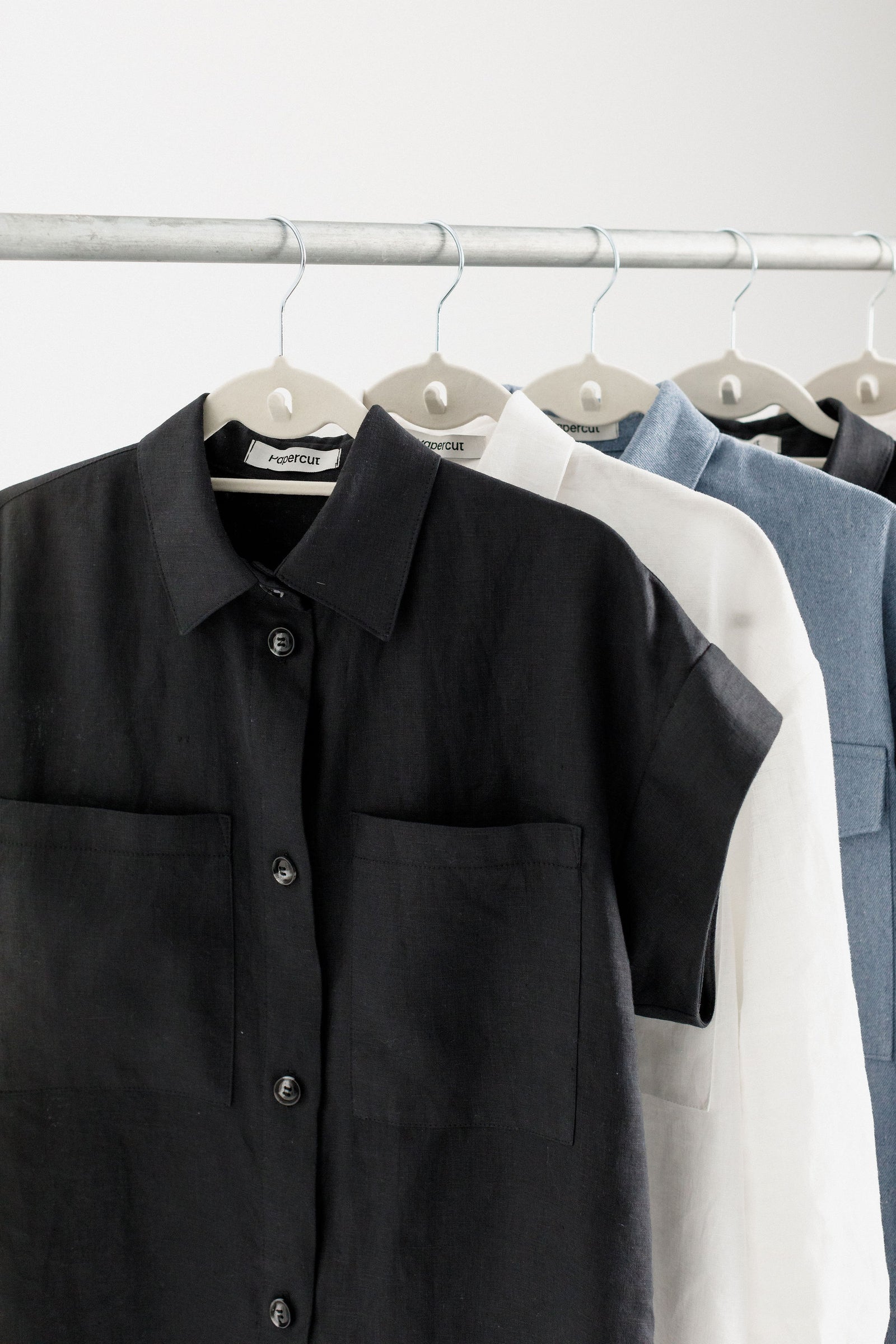When you start out on your sewing journey, or the more varied your projects become, you may come across some sewing terminology you're not familiar with. To help out, we've compiled a handy little list of common sewing terms and what they mean for you - happy sewing x
Backstitch
A backstitch is necessary to secure a line of stitches. Backstitching is overlapping stitches at both the beginning and end of a stitching line. This is done by sewing approx. 1-3 stitches by machine, reversing the direction of the feed dogs and stitching directly on top of the previously-made stitches.
Basting
Basting stitches are temporary long running stitches, made by machine or hand, that hold fabric together before the final permanent stitching. They are removed once the final seam is in place.
Bias
Bias refers to the diagonal of the fabric: a cut that’s made diagonally across the crosswise and lengthwise grain of the fabric. True bias is a cut made on an angle, 45 degrees to the selvage. This direction allows for the most stretch. Bias refers to any line diagonal to the crosswise and lengthwise grains.
Most bias pattern pieces are laid on the true bias; the grainline arrow and the pattern’s layout instructions will help you align your pattern pieces. Our Ravine dress is cut on the bias, which helps with its beautiful drape.
Clipping
When you clip fabric, you make snips in the seam allowance, up to but not through the stitching, to allow the fabric to open around curves or to lay flat.
Crossgrain
The line of fabric perpendicular (i.e. at an angle of 90°) to the selvage edge of the fabric.
Dart
A dart is a folded wedge of fabric used to shape a garment, particularly over curves.
Edge stitch
A second line of stitching very close to a seam line or garment edge, on the right side of the fabric. This is usually sewn to keep pressed seams in place.
Facing
A fabric piece used to create a finished edge on a garment (mostly used for necklines, armholes, or edges with closures), mirroring the edge it is sewn to and creating an enclosed edge.
French seam
A French seam is a finished seam in which the seam is initially stitched with wrong sides together, then flipped inside and stitched right sides together. This encloses the seam allowance, creating a clean finish on the inside of the garment.
Gathering
Gathering stitches are used to sew a longer edge to a shorter edge, resulting in significant fullness. Use a long stitch length and stitch three rows parallel to each other. Leave long thread tails which can be tugged to adjust ease before you sew.
Grading
After a seam is stitched, the two layers are trimmed to a different width in order to prevent a ridge showing on the outside of the garment seam. In Pattern Drafting, grading means the process of converting a pattern size to a larger or smaller size.
Grain
Grain describes the direction of the warp (= lengthwise thread direction) and the weft (= transverse/crosswise) in a woven fabric. The threads in a woven fabric are set up on a loom in a lengthwise and crosswise orientation. The lengthwise grain is used to lay out the garment pattern pieces. The crosswise grain runs from one selvage edge to the other.
Grain line
The imaginary line running lengthwise on the fabric, always parallel to the selvage edge. The grain line is marked on pattern pieces with a straight line, usually with arrows at either end, and marked as “grain line” or “straight grain.”
Interfacing/Fusing
A layer of of fabric used to stabilize the fashion fabric in a garment. Interfacing can be woven or non-woven, fusible or sew in.
Nap
A fabric texture that runs in a specific direction (for example, velvets and corduroys). Nap requires that all pieces be placed and cut in the same orientation. Prints that have directionality may not have a textured nap but also need care when placing pattern pieces.
Notches
The notches on a pattern help align the pattern pieces when you sew them together. Another type of notch is one that is added when sewing the outside edge of a curved seam. These notches are added by cutting wedge shapes into the seam allowance at even intervals, being careful not to cut into the stitching.
Right side, wrong side
The 'Right Side' refers to the side of the fabric designed to be on the outside of the garment. Sewing directions usually instruct to put right sides together and stitch, resulting in fabric seamed together with the seam allowances on the inside of the garment.
The 'Wrong Side' is the side of the fabric intended to be on the inside of the garment.
Seam allowance
The seam allowance is the distance from the edge of the cut fabric piece to the stitching, which can vary according to the pattern and fabric. Our standard seam allowance for Papercut Patterns is 1cm and included in the pattern pieces, unless otherwise stated on the pattern.
Selvage/ Selvedge
The woven edge of a fabric that runs parallel to the lengthwise grain. When you purchase fabric, it is cut across the crosswise grain, at a 90-degree angle to the selvage.
Stay stitch
A line of machine stitches on or near the seam line, stitched on a single layer of fabric, used to stabilise a cut edge.
Topstitch
Topstitching is a row of stitches seen on the outside of a garment. They can be decorative and also add strength and wearing ability to an item.
Under stitch
A row of stitching that attaches the facing to the seam allowance on the inside of the garment.
Sign up to get the latest on sales, new releases and more …
